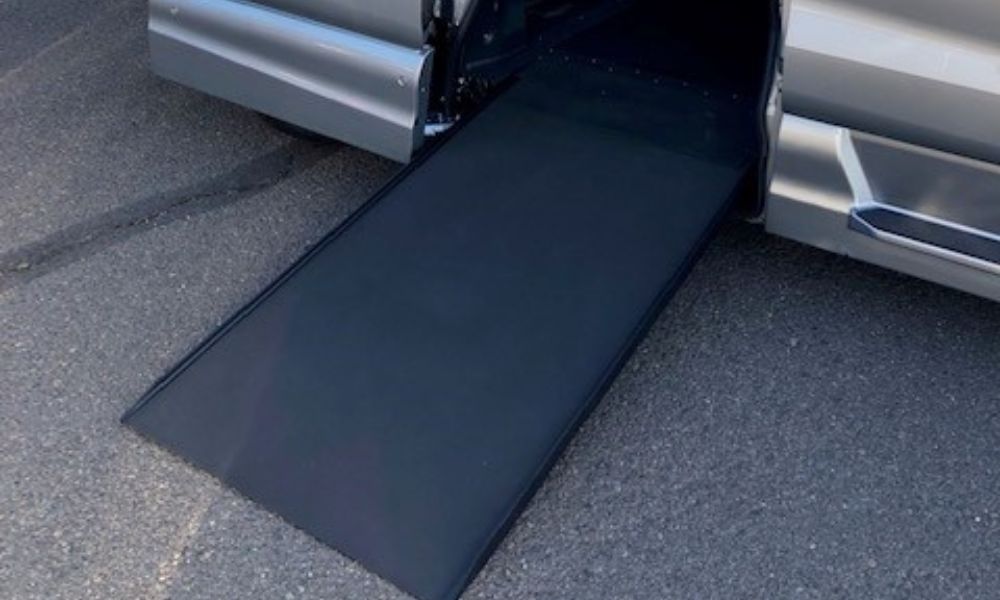
If you’re in the market for a wheelchair-accessible vehicle, you can choose from many options and features. One of the main considerations when choosing a mobility vehicle is how you will operate the ramp to get in and out of the car. Familiarize yourself with the pros and cons of power versus manual ramps to learn which option is best for you.
Pros of Power Ramps
Perhaps the greatest benefit of a power ramp is ease of use. Power ramps often operate by the touch of a button located inside the car. You won’t need to worry about exerting any effort when you want to enter or exit. Additionally, if you drive your own vehicle, you can independently raise and lower a power ramp!
If your vehicle has a power ramp, it’s most likely equipped with a kneeling system that lowers the car as the ramp deploys. Have you ever seen a bus lower to meet the curb when passengers enter and exit? The same mechanism works with your vehicle to decrease the slope of the ramp. A slight incline makes it easier for you to maneuver your wheelchair or other mobility device in and out of your car.
Cons of Power Ramps
Like any system that requires power, unexpected glitches can occur from time to time. If your power ramp malfunctions, it will require manual operation, which may cause a problem if you’re traveling independently. Additionally, the ramp may be difficult to deploy by hand if you have a limited range of motion.
Power ramps are typically more expensive than manual models. Since a power ramp operates using an electrical system and offers more convenience, it will likely cost more and require additional maintenance.
Pros of Manual Ramps
Let’s continue our exploration of the power versus manual ramp pros and cons with the advantages of a manual ramp. Manual ramps are largely more affordable than power ramps due to their simplified design. As the name suggests, manual ramps are raised and lowered by hand, but the ramp is usually lightweight and easy to maneuver.
Manual ramps require less upkeep than power ramps due to the lack of an electrical operating system. If you’re looking for a basic, budget-friendly option, a manual ramp may be the right choice for you.
Cons of Manual Ramps
If you’re a wheelchair user who travels independently, a manual ramp can be challenging to raise once you’re inside the vehicle. Since you can’t push a button to activate a manual ramp, you might need a helper to raise it once you’ve entered the van.
If you purchase a vehicle with a manual ramp, it will probably not have a kneeling system. You’ll need to navigate the ramp at a steeper slope since your van will not drop to meet the curb or sidewalk.
Whether you decide a power or manual ramp is the best choice, Northwest Mobility offers a wide range of handicapped-accessible vans to suit your lifestyle. We will work hard to find the perfect mobility vehicle for your transportation needs!
